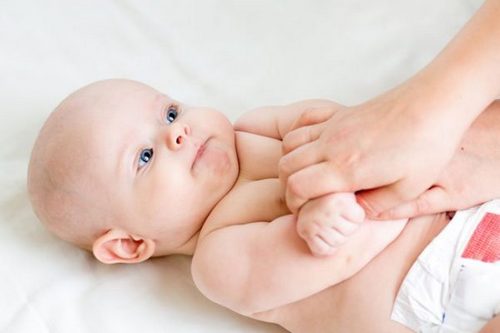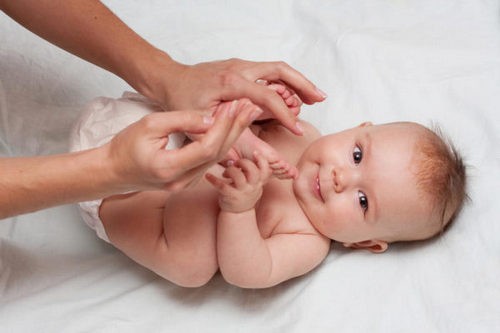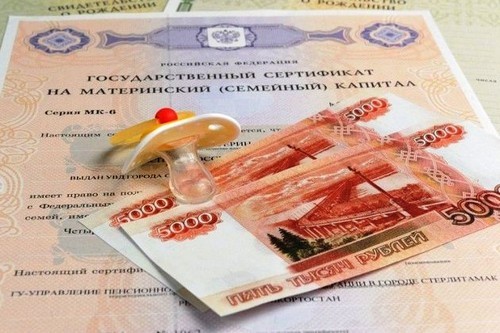Home massage for newborns and their parents is an important way of communication, but it has many other benefits. Only 5-10 minutes of daily exercise stimulate digestion, increase immunity, calm the nervous system for a deep, restful sleep.
Pediatricians note that babies who are regularly massaged gain weight faster, are more energetic and sociable.
In order to avoid excessive stimulation, it is important to understand the correct movements, the ideal timing and duration of the massage. Like any other form of therapy, it requires specific methods and a careful approach.
When to start massaging a newborn?
Long before the child begins to speak, he communicates with the world through tactile sensations. The mother instinctively touches the newborn to calm him. Massage is a continuation of this natural impulse.
Russian pediatricians recommend massage for newborns at home from 2-3 weeks of life, however, among foreign doctors there is a widespread opinion that the procedure is necessary from the moment of birth. The exception is premature babies: they are unstable from a medical point of view, and massage for them can become unduly stimulating. Also, it is not recommended for fever, skin lesions (pyoderma and atopic dermatitis), blood coagulation disorders.

The benefits of the procedure
Massage has many physical and psychological benefits for children and their parents:
- It supports a healthy immune system and the full development of the child by promoting blood and lymph circulation throughout the body. Such stimulation allows you to efficiently deliver nutrients to tissues and organs, and then remove metabolic products.
- Massage activates the production of certain hormones that are responsible for a good mood and relieve pain. In particular, these are endorphins and oxytocin, which help minimize suffering due to colic or other problems.
- It helps to find a balance between increased and decreased muscle tone. Full body massage stimulates the muscles, but at the same time relaxes them with excessive tension.
- It supports the child’s ability to realize their individual development potential, helping to ripen the nervous system and stimulating the brain and body connections.
- Raises the awareness of the child about the capabilities of his own body, the size and location of its parts.
- Massage is a great way to communicate. He gives the child the realization that he is loved and cherished. A focused, continuous exchange of touches and eye contact contribute to mutual understanding and trust.
- For parents, this is an effective way to take a “time out” and escape from everyday stress.
Although massage is useful for all infants, it is very valuable for children with special needs – with Down syndrome or cerebral palsy, as it provides a unique way of communication and stimulation of development.
Massage Conditions
When preparing and conducting massage procedures at home for a newborn child, it is advisable to adhere to some recommendations regarding time, space and technique of movements.
Time
Before the massage, choose a time that is comfortable for all participants in the process. You should not rush anywhere, calm and leisurely will help to make movements as soft and measured as possible. Do not start the massage when the child has just eaten or is hungry, wants to sleep, or is naughty. The most suitable time is an hour and a half after feeding in the morning.
Often you can find recommendations for 10-15 minutes of massage per day. In fact, the main indicator of the time of the procedure is the child himself. As soon as he complains, stop, no matter how long the massage lasts.

For children under the age of 5 months, try to make intervals of several hours between the massage and the bath. This can lead to excessive stimulation of the nervous system. Never massage your baby when he is crying, the only exception is movements to relieve colic, constipation, and gas.
A place
Find a place and position that is comfortable for you and the baby. The main requirements are the ability to maintain eye contact, a comfortable temperature (standard recommendation is about 24 ° C) and a ventilated area.
Many people prefer to put the baby on the changing table, but massage can be done sitting on the floor, bed or sofa, holding the baby on his lap, but not forgetting about his safety. In this case, it is worth protecting the clothes with a diaper, especially if you use oil.
Massage oil
Oil is not necessary for massage, but its use allows you to make the effect on delicate skin softer and helps moisturize it. There are many excellent baby oils on the market, but vegetable oil (mostly cold pressed) is enough. You can use lavender, chamomile, rose or cedar oil, supplementing them with vitamins A and E, solutions of which are sold in the pharmacy. Before the first use, you should do a sensitivity test so that the baby’s skin does not suffer from unexpected allergies.
As for finished oils, carefully study the composition. The product should be hypoallergenic and contain a minimum of chemical additives.
Types of massage for newborns
At home, a newborn is usually given a general strengthening (aka prophylactic) massage – it is useful for general development in the absence of special problems with health and development.
They also distinguish a special therapeutic massage – it is aimed at problem areas, and therapeutic and prophylactic, which covers the entire body with special attention to violations. These procedures are prescribed by a doctor (neurologist, pediatrician, orthopedist) according to indications and performed by a specialist, however, you can do them yourself, but only after training.
Basic massage techniques
When performing a massage, remember the following general principles:
- Always start by massaging your legs – this is the least intrusive way to start a massage, as you constantly touch your legs when changing diapers or diapers.
- Patting stimulates the nervous system, and stroking it soothes.
- Use lingering and soft movements with light pressure and a speed of about 2 cm per second (speed of the lymph flow), jerky, quick and too light touches can annoy the child.
- Repeat each movement at least 3 times.
- Massage of the limbs and body is carried out mainly from the periphery to the center, and the abdomen – clockwise and only in its lower half, without affecting the liver and heart.
- Before starting the procedure, warn the child about the massage. Over time, he will get used to, remember and will know what they are going to do with him.
- Turn on soothing background music or sing along.
- It is not necessary to do a full body massage every time, if after rubbing the feet the child does not want to continue, do not force him.
- Follow the wishes of the child when he turns away, cries or is naughty, postpone the procedure, if he does not like any movements, do not insist. Massage should be fun.
You can use the following tricks :
- stroking, this is the type of movement recommended for newborns;
- rubbing – for children from 6 weeks;
- kneading, this technique is used mainly by specialists;
- vibration or patting – on the feet and palms can be used from the very beginning, on the body only after 1.5 months of life.
Features of massage babies of different ages and a set of exercises
Until one and a half months, pediatricians recommend using gentle strokes as a massage. This is due to the fact that the skin of the newborn is too thin and delicate, and patting can lead to hyperstimulation of the nervous system. In the future, the remaining techniques are gradually introduced, and by 3-4 months some gymnastic elements.

Actually, a home massage procedure for newborns can look like this:
- Feet and feet. Stroke the feet, make a few circular movements on them and pay attention to each toe. They can be gently taken with the thumb and forefinger and gently rolled. Then take the baby’s heel in one hand, and stroke the other from the thigh to the ankle, squeezing slightly – this is similar to milking a cow. Make a few backward movements from ankle to hip and change legs.
- Hands. Start with the palms, massaging each finger, and then gently and slightly squeezing, stroke from the armpits to the hands, and then back. You can turn your wrists slightly in one direction and another.
- Head. Place your hands on both sides of the baby’s head, and then lower them down to the toes. Then draw small circles on the head with your fingertips.
- Face. Fold your arms (as if you are praying) on the baby’s forehead, and then carefully spread them to the temples. Using your thumb, draw a smile on the baby’s face, stroking it from one cheek through the upper lip to the other. Repeat on the lower lip.
- Chest. Fold your arms over your child’s chest and then spread them apart, as if you are smoothing the pages of an open book.
- Stomach. Use your fingertips to draw an oval below your baby’s belly button (clockwise to follow the natural digestion path).
- Back. Swipe it from side to side, and then up and down. Make circular movements as well.
A restorative massage for newborns, carried out at home, can accelerate the psychological and physical development of the child, alleviate digestive problems, give a deep sleep. But its most valuable advantage is the possibility of mutual communication. Many pediatricians argue that the main thing is not so much the technique as the pleasure that parents and children receive from touch, smell and eye contact. A restorative massage should be done only after consultation with a doctor, and therapeutic massage according to strict indications



